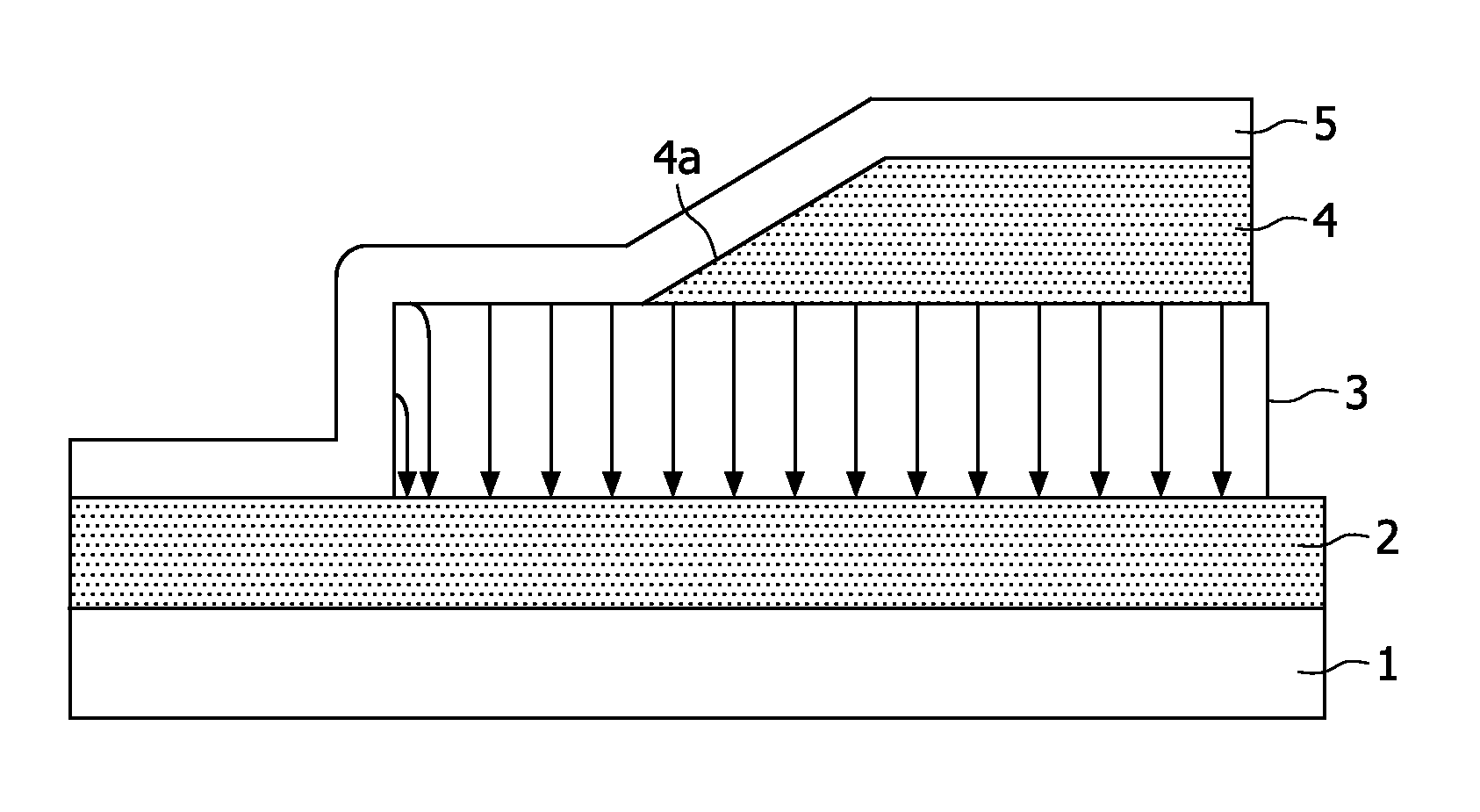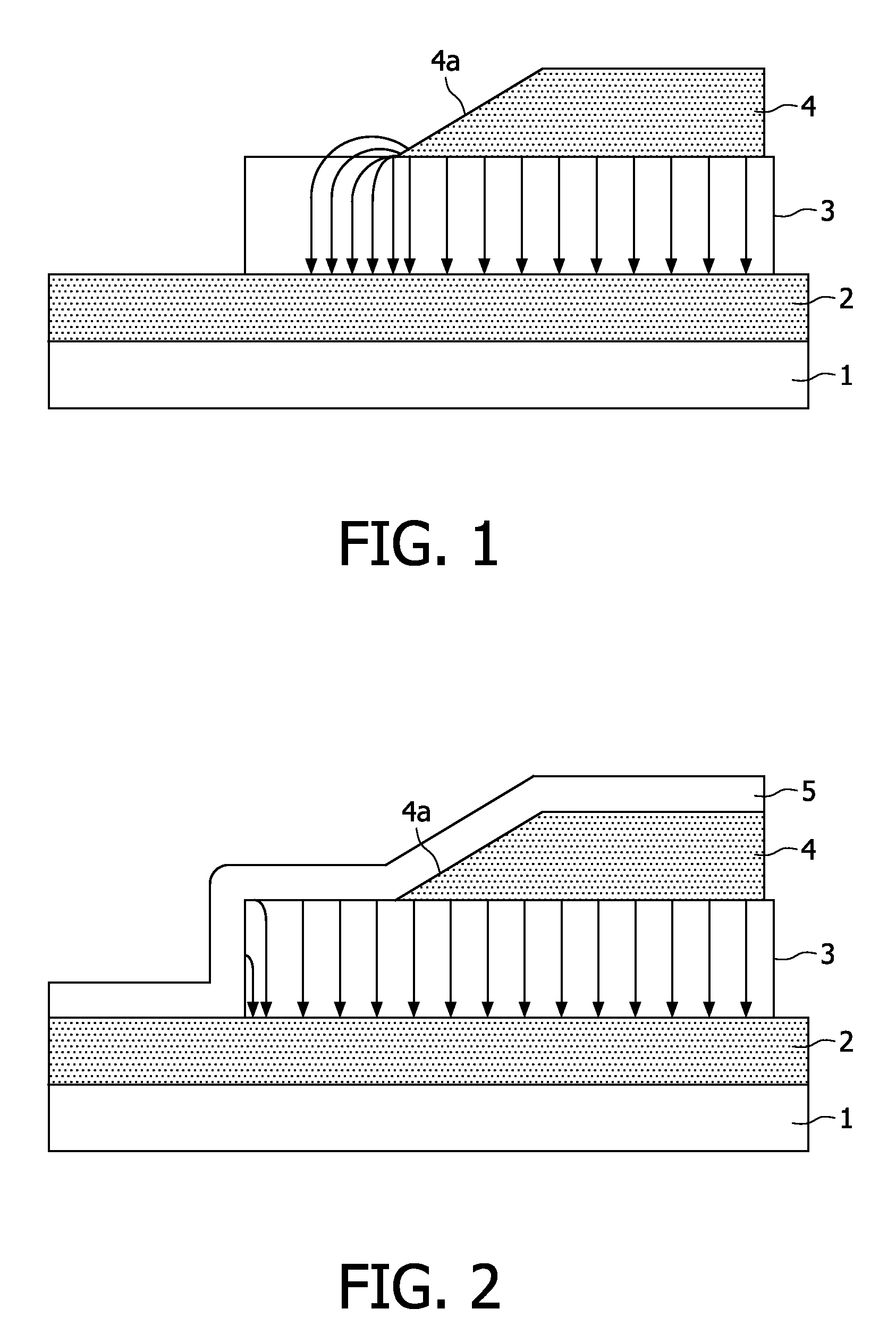Voltage-operated layered arrangement
a technology of layered arrangements and voltage, applied in the direction of electroluminescent light sources, thermoelectric devices, electric lighting sources, etc., can solve the problems of failure of the entire electroluminescent layer
- Summary
- Abstract
- Description
- Claims
- Application Information
AI Technical Summary
Benefits of technology
Problems solved by technology
Method used
Image
Examples
Embodiment Construction
[0021]A voltage-operated layered arrangement of the kind shown in FIG. 1, such for example as an organic electroluminescent arrangement (OLED), comprises individual thin layers the majority of which are produced by dry directional coating processes such for example as vacuum deposition and / or sputtering. What is referred to as a directional coating process is a process in which the material to be applied moves substantially in a straight line from the source to the substrate to be coated. A characteristic of such processes is uncoated regions (shadowed regions) which are situated behind edges, masks, etc. arranged in the region of space between the source and substrate. In such directional coating processes, edges occur as a result of, for example, the structuring of the layered arrangement by masking techniques.
[0022]For an OLED arrangement, a typical operating voltage is of the order of 3 to 10 V between the electrodes 2 and 4. With a typical electrode spacing of 100 nm, that corr...
PUM
 Login to View More
Login to View More Abstract
Description
Claims
Application Information
 Login to View More
Login to View More - R&D
- Intellectual Property
- Life Sciences
- Materials
- Tech Scout
- Unparalleled Data Quality
- Higher Quality Content
- 60% Fewer Hallucinations
Browse by: Latest US Patents, China's latest patents, Technical Efficacy Thesaurus, Application Domain, Technology Topic, Popular Technical Reports.
© 2025 PatSnap. All rights reserved.Legal|Privacy policy|Modern Slavery Act Transparency Statement|Sitemap|About US| Contact US: help@patsnap.com


